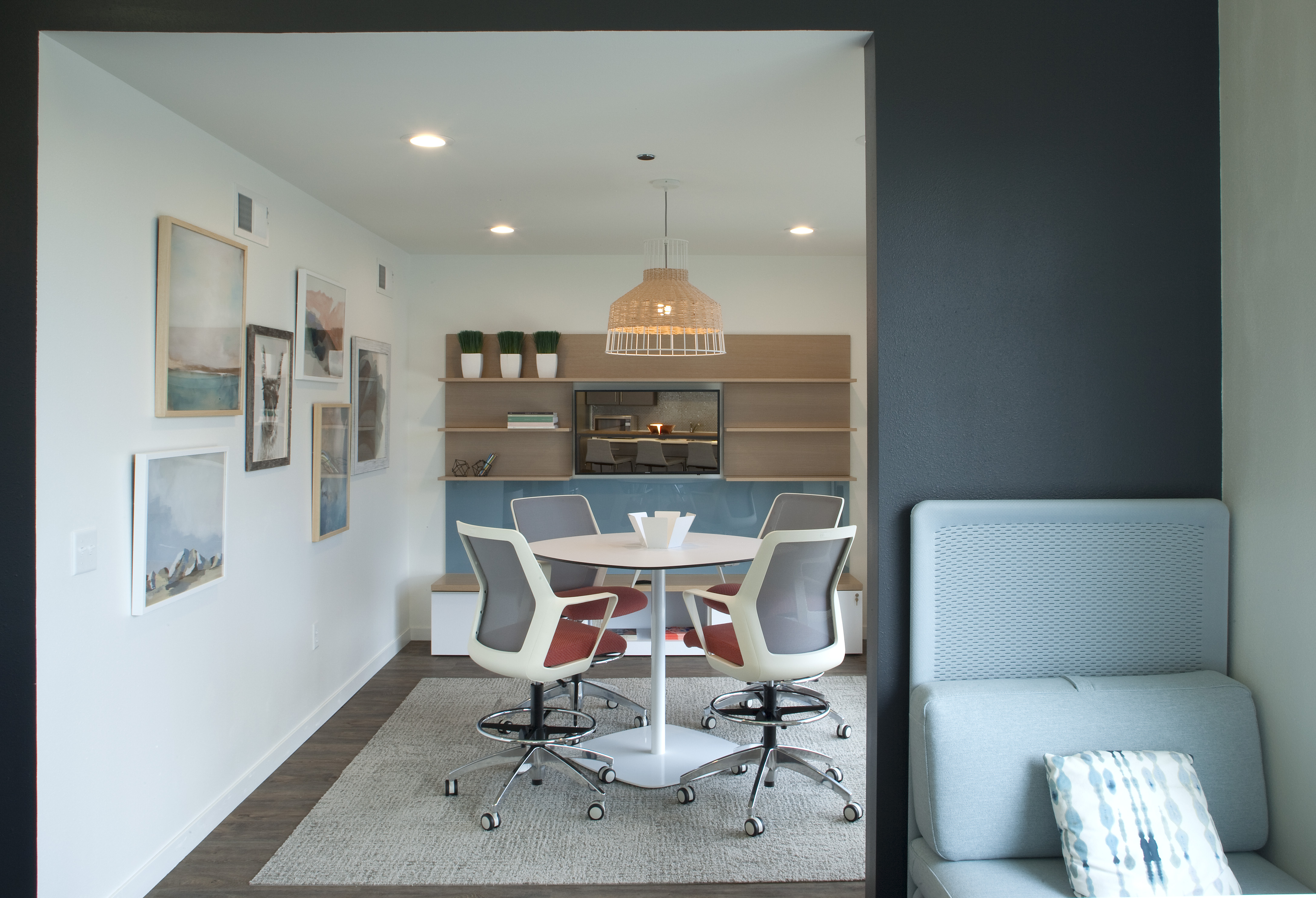Interview with Jason Lund, Director of AV and IT, cont’d.
ACI: What would you say is the coolest, but also most functional technology that you’ve seen coming out or coming out that you want to incorporate?
Lund: Augmented reality has a TON of application in what we do, and we’ve had a lot of success piloting an iPad based solution called InstantAR (Praxik) that integrates directly with our 3D design software (CET Designer). In our early tests, this technology was very helpful in co-designing with clients, and rapid prototyping ideas for our own office spaces. It’s gotten rave reviews from clients, though moving from the “Pokemon Go” style iPad-based interface to wearable will make this much more practical in large scale application.
Beyond the critically important function of communicating design intent to our clients, AR can help us better train our installation and service techs on new products or install techniques, enhance our client tours and demonstrations within our WORKLAB spaces, load trucks more efficiently, and continue to prototype and test space concepts with our teams and clients before the cost and time required to purchase and install physical product.
ACI: What are possible negative implications of the more recent advances in workplace technology?
Lund: More broadly speaking, concerns about personal privacy being balanced against the desire for personalization of experience have huge implications for us. Putting a bunch of sensors in workspace tends to raise eyebrows, particularly given the revelations around Facebook’s handling of personal data in ways people felt might not be in their best interest. The key is to help people understand what the data is being used for, and weight carefully the value of a custom/personal experience with the obligations to protect vast amounts of data with people’s identity attached.
Going overboard with sensing/location management technology in workspace can push into management or cultural concerns with trust or excessive cost focus. If you offer great space but set it up with sensors and cameras like a Big Brother reality show it’s too much and people will hate working there… but if you fail to utilize a space sensing technology to understand and improve your workspace at this point you’re really missing out. Balance…
ACI: What would you say then, on the other end of the spectrum, is the most prohibitive technology we’re currently dealing with?
Lund: I think compliance. Compliance activities are an interesting sort of specter–I mean, regulation is not a bad thing if the intent of regulation is to prevent pollutants from being dumped into the water, but what is the right balance of regulatory oversight versus owner-ess regulation that leads to higher costs to do business and hurts our ability to innovate and be truly disruptive. I would say the greatest inhibitor of our users is our users today. I think it’s hard for IT people, good IT people, to make some broad characterizations, as they have to be continuous learners and just be comfortable with the fact that nothing is ever constant in this business. Whether it’s a regulatory change on this end or a new disruptive technology–the budget implications, the business changing directions, whatever it is, we constantly need to keep track of all those issues, and then within that portfolio itself we manage to deal with it. At the end of the day, we try to make things as simple and intuitive as possible, but there’s a level of reliance on users just learning how to do stuff, that is a trick, and if you have a user base that isn’t the best at that, then no amount of innovation is going to bring them there.
ACI: How do you see technology teams aligning with more traditional business disciplines within leadership teams to make some of these things happen?
Lund: I think there’s a two-way street. We (as tech providers) must build credibility by making the systems as valuable, scalable and easy to use as possible while also being able to explain complex technical concepts in actionable business terms that non-techie leaders can understand. We, in turn, need business leaders to meet us part way and start to understand the fundamentals of IT as a business practice, and hold their teams accountable for continual learning and being proficient with the tech tools they are being provided to do their jobs effectively.

Sales Enablement Consultant, Carissa McNulty, shares her thoughts on utilizing technology in our WORKLAB:
“We believe that technology and space go hand-in-hand and can make or break the effectiveness of your workplace. Throughout our design process, we will work with you to understand your furniture and technology needs and suggest solutions for your organization to help you be successful.
We have many great solutions in our WORKLAB that support the way we work, which we can also provide to our clients. Wireless internet throughout our space ensures that we can work anywhere within the space to accomplish the task at hand and collaborate with our colleagues. Barco Click Share and Steelcase media:scape devices allow us to share technology in open and enclosed collaborative areas. The Steelcase Find app allows you to search for open meeting rooms and book them from your mobile device. We utilize a space management solution called Steelcase Workplace Advisor, which will tell you how efficiently and how often your spaces are being used over time. This is helpful for making long term decisions about your space or to test out some concepts prior to remodels or taking on additional real estate.
Our goal is to help you make smart business decisions and come up with a solution that supports your employees to help them do their best work.”
This article is co-written by Jodi Hoberg, Marketing Assistant, and Jason Lund, Director of AV and IT.

